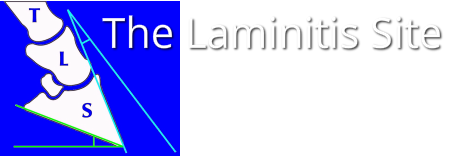Dianne McFarlane
Equine Pituitary Pars Intermedia Dysfunction
Veterinary Clinics of North America: Equine Practice, Vol 27,
McFarlane goes on to say that measuring ACTH and alpha-MSH are useful in the diagnosis of PPID (measuring ACTH is now the most widely used test for PPID in the UK), and that the TRH stimulation of ACTH may be useful (compared to measuring cortisol - further research has been done since McFarlane's paper was published and the TRH stimulation of ACTH is now recommended as a second-tier test when resting ACTH results are equivocal). Insulin is suggested as being increased in around 60% of PPID horses, and monitoring fasting insulin is recommended for all PPID horses to predict laminitis risk. It is suggested that cortisol circadian rhythm loss, urinary cortisol/creatinine ratio and ACTH stimulation test are poor tests for diagnosing PPID. Treatment suggestions include aggressive preventative health care (tooth and hoof care, nutrition, parasite control, clipping, rugging, shelter), and treatment with pergolide. Cyproheptadine is mentioned for possible use in combination with pergolide when pergolide alone doesn't control clinical symptoms, and Trilostane for possible use in horses with hypercortisolemia. Natural remedies, specifically Vitex agnus castus, are warned against due to the lack of evidence of efficacy and safety.
Points we found of particular interest:
Alpha-MSH (increased in horses with PPID) is a potent anti-inflammatory - some owners report increased signs of arthritis and similar problems when horses start treatment with pergolide - is this because "natural" anti-inflammatory levels are reduced?
Similarly beta-endorphin (also increased in horses with PPID) has pain relieving and anti-inflammatory effects.
CLIP (another hormone increased in horses with PPID) stimulates the release of insulin in rodents - this hasn't been studied in horses. Could this be causing laminitis in horses with PPID?
20% of horses testing positive for PPID using ACTH and/or alpha-MSH had no clinical signs of disease - did they really have PPID or were these false positives? We are often asked whether horses with above normal ACTH results but no clinical symptoms should be treated.
McFarlane suggests it would be interesting to study the geographical incidence of PPID cases, and that finding a pattern might suggest that environmental exposures may predispose to PPID, as exposure to agricultural chemicals has been shown to predispose to Parkinson's disease in humans. We know of several owners/yards with what appears to be a greater than normal number of PPID horses - are environmental/management factors involved?
It's now well accepted that PPID is a dopaminergic neurodegenerative disease, and that oxidative stress may contribute to neuronal damage and death.
The mechanisms causing the symptoms of PPID are mostly not understood.
"It is conceivable that PPID is a collection of syndromes each with a unique set of clinical signs and hormone profiles" - this may explain why horses with PPID can have such different symptoms and blood test results, and emphasises that each horse must be treated as an individual. It is also unlikely that one testing method will be ideal for every case of PPID.
Obesity and insulin resistance cause oxidative stress, which may cause PPID.
Alpha-MSH, beta-endorphin and ACTH all suppress the immune system, possibly causing the increase in infections and parasite burdens often seen in horses with PPID.
Horses with PPID are often lethargic - this could be because of insulin resistance, other diseases due to PPID, or increased beta-endorphin levels.
PPID horses with laminitis often appear to have low-grade laminitis, but this may be because their pain threshold is higher due to increased beta-endorphin levels. They could still be at risk of significant damage.
The diagnosis of PPID is not straightforward!
False negative test results are common in the early stages of PPID, and it is likely that significant effects of the disease have already occurred by the time tests diagnose PPID.
If a horse shows symptoms of PPID but blood tests are negative, repeated testing is recommended.
At post mortem, the pituitary gland of a horse with PPID can be 2 to 5 times the normal size, and compression of other parts of the pituitary gland and rarely the optic chiasm (through which the optic nerves pass) and the hypothalamus can be seen. Evidence of damage may be seen in other organs such as the heart, liver, kidneys and lungs.
And finally, to end on a positive note: "when well cared for, horses with PPID can live into their 30s and even 40s".
For notes of Dianne McFarlane's presentation at the Equine Endocrinology Summit 2011 and a link to view the presentation, see: http://thelaminitissite.myfastforum.org/about126.html

 RSS Feed
RSS Feed